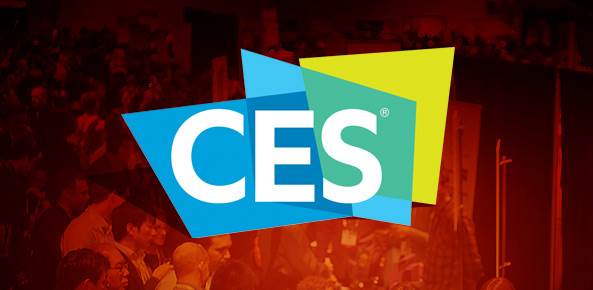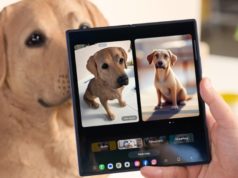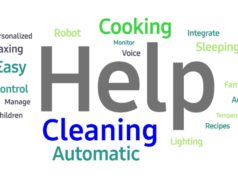
This summer, Pokémon Go became the first augmented reality app to catch fire with consumers. At the same time, Samsung, HTC and Google aggressively pushed a sister technology — virtual reality headsets — as part of their new smartphone launches.
So it’s no wonder virtual reality/augmented reality are poised to be the rabbit everyone chases at the upcoming CES 2017 trade show in Las Vegas — a massive consumer electronics extravaganza that opens Jan. 5.
Every year there are one or two such technologies — think 3-D printers and drones — where the hype becomes a bit frothy.
“My overall analysis about virtual reality is the use case is still feeling a little forced,” said Scott Peterson, senior analyst with San Diego market research firm Gap Intelligence, referring to Samsung’s TV commercials showing a group of people using the Gear headset. “For gaming it’s awesome. But it is not very social. When you want to interact with people, that is not what the experience is.”
Forced or not, the virtual reality/augmented reality product category trails only wearables for the largest percentage increase in the number of exhibitors at CES compared with the prior year, said Gary Shapiro, head of the Consumer Technology Association, which puts on the show.
“In terms of the consumer segment it is obviously a nascent market but there is huge interest in it,” said Shapiro. “The content is increasing dramatically, both in the business and consumer space. That has been the untold story.”
CES probably needs a rabbit or two every year to keep the show fresh. While they leave their mark, they don’t dominate the event.
There’s a lot more to see.
CES attracts more than 3,800 exhibitors under 2.5 million square feet of floor space. More than 175,000 product buyers, industry analysts and journalists attend. It is not open to the general public.
There are gadgets seemingly for everything. Reflexion Interactive Technologies, founded by Pennsylvania college students, will show off a prototype machine that can detect concussions. RightEye uses eye-tracking technology to identify autism traits in toddlers and reading disorders in students. Carnival Cruise Lines, which views itself as operating floating cities, is unveiling smart cities technology that’s coming to cruise ships. FeetMe has developed connected insoles and running analysis apps. FridgeCam attaches a camera to any refrigerator so users can see what’s running low, and there is a companion app that tracks how long food items have been in the fridge.
San Diego’s ResMed, which makes devices to prevent sleep apnea, has teamed up with TV talk show surgeon Mehmet Oz on what the company calls the most accurate large sleep study ever. The findings will be released at the show.
“There is the matter of serendipity,” said Shapiro of the Consumer Technology Association. “When you have almost 4,000 companies, you are going to find things you haven’t seen before.”
Here are a few additional trends to watch at CES 2017:
TVs
Display makers have been focusing on picture quality in recent years. Ultra-high definition 4K TVs are widespread now. There wasn’t a lot of 4K content at first, but now 4K shows are available through streaming services such as Netflix, as well as on Ultra HD discs. And prices for 4K sets continue to fall.
“I saw quite a few on Black Friday this year — there were a number of 55 inch 4K TVs from top name brands, for $500 to $600,” said Paul Gagnon, an analyst with IHS Markit. “This time last year, they were about $900.”
With 4K resolution putting more pixels on the screen, TV makers have turned their attention toward two additional pillars of picture quality — contrast and color gamut, said Gagnon.
Producing brighter light parts of the screen and deeper dark parts is called High Dynamic Range, which several TV makers are touting, said Gagnon.
In addition, providing more vivid, saturated colors using a variety of techniques makes images more realistic — with some TVs today achieving almost 90 percent of the color range found in movie theaters.
But there is little standardization for all the ways TV makers create better contrast and vivid colors. That creates confusion for consumers, said Gagnon. He is watching to see if TV makers at the show begin to take steps to clear up this confusion.
“Consumers shouldn’t have to try to match up their DVD player, their streaming service and their TV to make sure they have all the pieces of the puzzle to watch a Dolby Vision movie,” he said.
Wearables
Eighty-two companies will be exhibiting smartwatches, fitness trackers and other wearable tech at CES in 2017, a triple digit percentage increase over the prior year. The market is branching, with one limb pointing toward medical uses for wearable technology and the other geared toward consumers, said Jackson Somes, a market analyst with Gap Intelligence.
There has been some fallout on the consumer side of the business as Apple and other big players have entered the market. Early pioneer Pebble sold its assets to Fitbit, while Jawbone has made headlines for reported financial struggles.
“Two of the major start-ups that helped found the wearables sector are out of the game,” said Somes. “Right now, the wearables market is in a recuperating period.”
But he expects a rebound, particularly in smartwatches, when Google updates its Android Wear software in early 2017. Google has said the Android Wear update will untether smartwatches from the smartphone.
“It can connect to the cellular network by itself, Wi-Fi by itself, download apps independently of a smartphone,” said Somes. “Once that new update comes out you are going to see an influx of new products that run this operating system.”
Car Tech
Automakers demonstrated self-driving vehicle technology a year ago at CES, and expect more of it this year. BMW, Honda, Toyota, Ford, Nissan, Chrysler, Volkswagen are among the automakers attending.
“CES more than anything has turned into the automotive technology show,” said Jim McGregor, principal at Tirias Research. “I already have invitations from these guys to show off what they are doing with autonomous vehicles. I expect to see a lot of stuff.”
Besides self-driving cars, high speed Internet links, active window displays, improved navigation and additional safety/driver assist features are among the technologies that automakers will tout at the show, said Shapiro of the CTA.
Better Sound
Audio somehow got lost in the transition from analog to digital. But now sound quality is back in the spotlight, with everything from high definition music players to advanced sound headphones expected to make noise at this year’s show.
San Diego’s Ossic has created 3-D audio headphones that deliver sound directionally. The Ossic X pairs 3-D audio algorithms with head-tracking and individual anatomy calibrations to give spatial intelligence to sound. So if a user is watching a movie and a helicopter flies into a scene from behind and above, the headphones make the chopper blade drumbeat come from behind and above the user.
“What has really come to the surface with audio is everyone has realized if you want to create an immersive experience, it’s not all about the visual,” said McGregor of Tirias Research. “You have to have the audio, too. It has been around for so long, but we are seeing so much innovation around audio right now.”
Smart Home
Smart Home technology has a big footprint at CES, with 170 exhibitors and 84,000 square feet of floor space. While this technology is making strides, it’s not mainstream, said Blake Kozak, principal analyst with IHS Markit. And it won’t be until consumers view smart home technology as an investment that saves energy, potentially cuts insurance premiums and adds value to the home — rather than a novelty or hobby.
Still, Kozak thinks consumers will look harder at smart home technology in 2017. Personal voice assistants such as Google Home, Amazon Echo and Mykie from Bosch are considered smart home devices, and their popularity could open a door for consumers to consider other smart home gear.
© 2017 San Diego Union-Tribune under contract with NewsEdge. -.





![[CES 2026] Quest For Perfect Color…Samsung To Push](https://loginby.com/itnews/wp-content/uploads/2025/12/CES-2026-Quest-For-Perfect-Color…Samsung-To-Push-100x75.jpg)

